The Corsair Strafe RGB Mechanical Keyboard Review with MX Silent (Red) Switches
by E. Fylladitakis on March 15, 2016 10:00 AM EST- Posted in
- Keyboard
- Corsair
- Cherry MX
- Mechanical Keyboards
The Corsair Strafe RGB Mechanical Keyboard
Externally, the Strafe RGB is a rather simple keyboard, sporting a plastic body and a modern design, based on simple geometric shapes and curves. The plastics are of very good quality, feel great and are very firm. Although it is very similar to the vanilla Strafe version, there are distinctive differences between the two models. Visually, the most obvious difference is that the red metallic support plate is now white, in order to not distort the lighting color. Corsair also moved the company name to the right side of the keyboard and added wrist rest support. The company's "sails" logo remains at the top left side of the keyboard, now illuminated.
The Strafe RGB is a standard full-size keyboard, with the only two extra keys being the square keys at the top right side of the keyboard. By default, one of the square keys controls the intensity of the lighting, while the second locks the Windows keys so they are not accidentally pressed during gaming (which minimises the game and may cause a bit of rage). Media functions for volume and track controls have been inserted as secondary commands in the F5-F12 keys, and are accessible by holding down the FN key. There are no dedicated media keys or the much-loved metallic volume control wheel that is found on their higher tier keyboards. Since the Strafe RGB is fully programmable, it is highly likely that one of the two extra keys can become a volume mute key, or both are going to become volume control keys.
The stock keycaps of the Strafe RGB are standard cylindrical black keycaps with enlarged characters, with the exception of the Space Bar key. The Space Bar key is textured and it feels great while typing. The surface of the Space Bar should also decay less easily now, as Space Bar keys with their right side heavily worn out by aggressive thumbs are a common phenomenon. For gamers, Corsair supplies two sets of contoured and textured keycaps. The WASD keycap set is meant for FPS gamers, while the QWERDF set is meant for MOBA gamers. If someone likes to change the stock key settings from, for example, WASD to ESDF like some FPS gamers do, the only solution would be to use the contoured keycaps in the place of the ESDF keys, ignoring the wrong characters.
Beneath the keycaps, we find Cherry's new MX Silent switches. These are practically Cherry MX Red switches, modified to minimize the noise generated via keystrokes. In order to achieve that, Cherry is using a glass-fibre reinforced base that dampens sound when the keys bottom down, as well as mechanical tappets that reduce the noise when the key resets after the finger has been removed. The new additions shorten the travel distance a little, from 4 mm to 3.7 mm, but the actuation force remains the same (45 cN for the MX Red variants), so they should not feel any different to someone accustomed to the normal MX Red switch.
The backlighting is performed using RGB LEDs that project the light upwards to the keycap characters, and also surround the keycap by diffusing through the clear body of the switch. The lighting effect is good and evenly distributed, with the exception of the bottom row that is significantly dimmer towards its bottom. Furthermore, only the main character of the keycaps is being clearly illuminated, as the light of the LED reaching the secondary character is being blocked by the key's axis.
LED lighting strips have been installed on both sides of the keyboard in the gap between the glossy white top and side covers. The lighting strips are not RGB, only white, and can be only turned on or off via the software. The same goes for the company logo at the top left corner of the keyboard.
The Strafe RGB actually features one thing that none of the top tier RGB Corsair keyboards has - a USB port. The pass-through USB port is found at the rear of the keyboard, near the thick cable. It is worth noting that there is no polling rate switch on the Strafe RGB like on the K70/K95 variants, and the cable is not braided either - it is a thick black cable with futuristic easy-grip connectors.
Removing the top cover of the keyboard reveals the satin white metallic plate that supports the main PCB and the keys. It is the common steel plate found in most such designs, which is a little heavy but very durable.
The assembly/soldering of the keyboard is textbook, with no flaws to be found on the main PCB itself. There are no excess solder or points to be found anywhere. The power cables of the side LEDs however could have had the connectors soldered onto the main PCB, as those in our sample were particularly easy to come off. Corsair is using an NXP LPC11U37F controller for their Strafe RGB, the same as the one found in the K70 RGB. It is a high performance 50MHz processor with 128 kB on-chip flash memory.


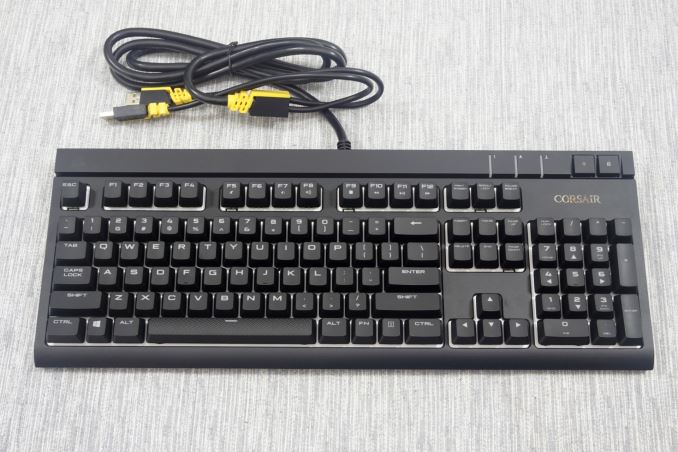
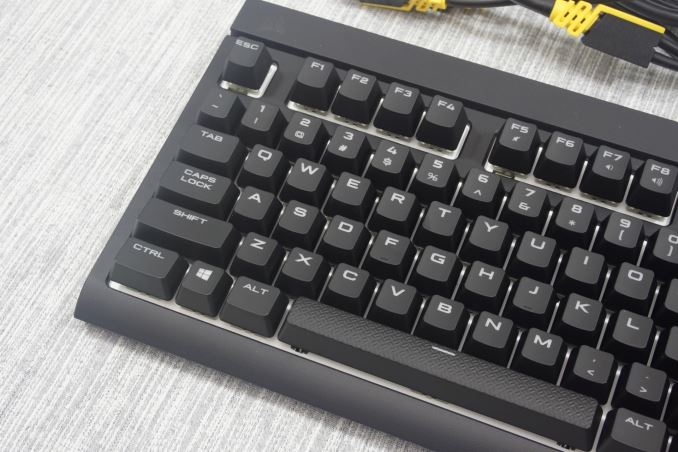
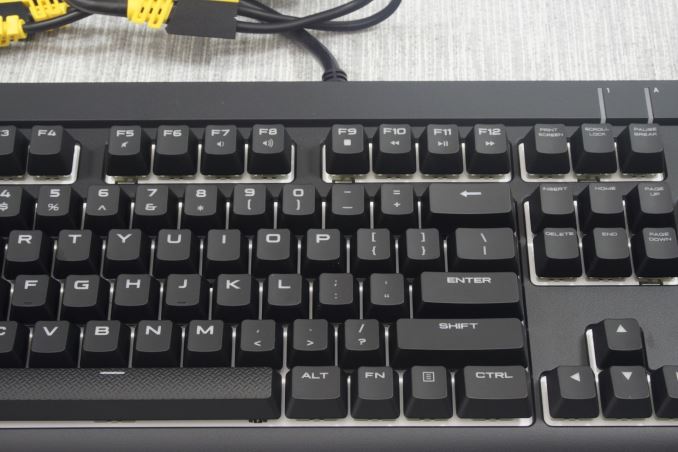
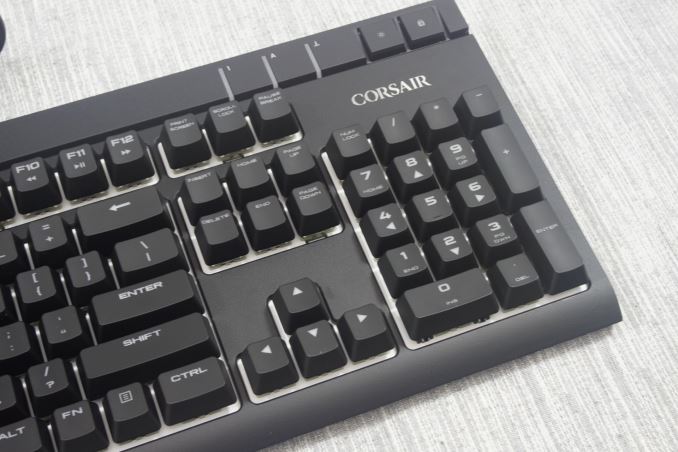
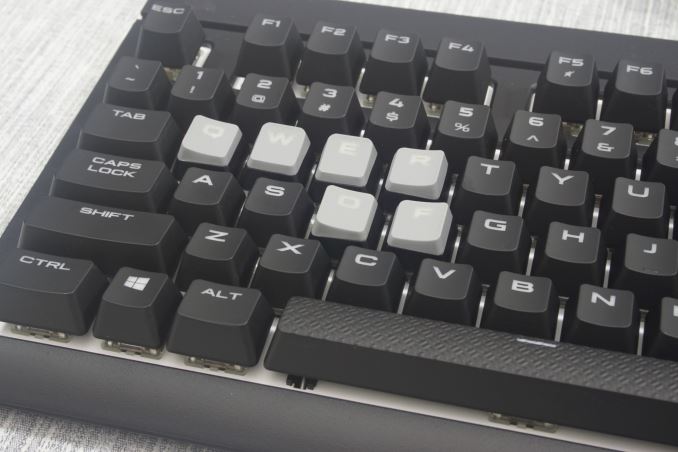
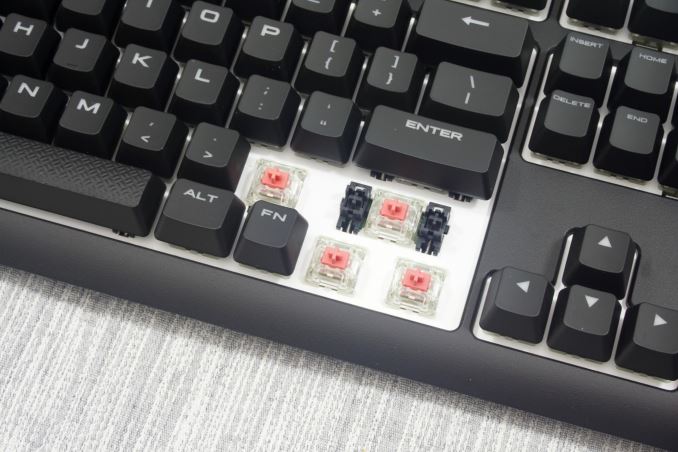


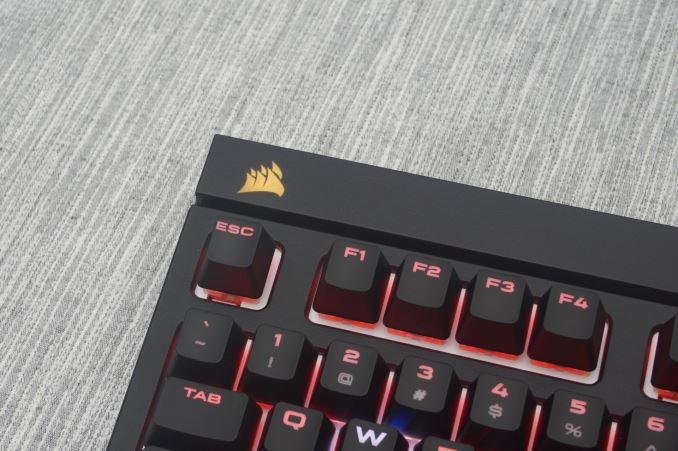
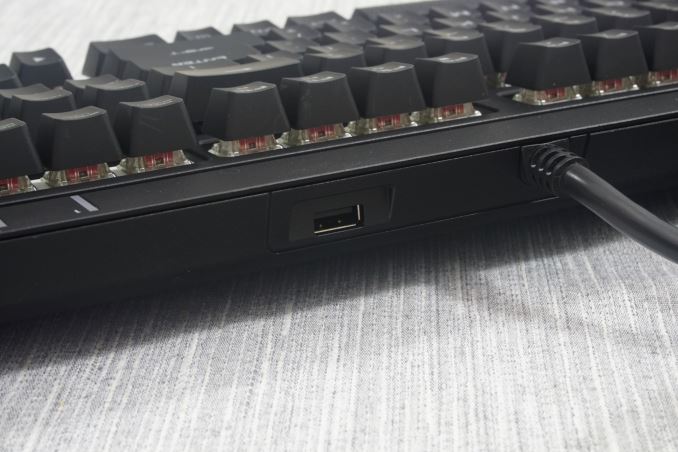

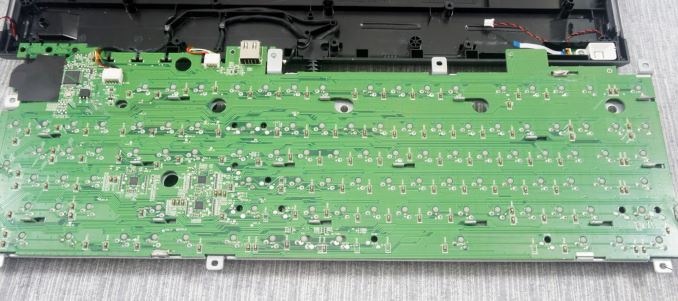
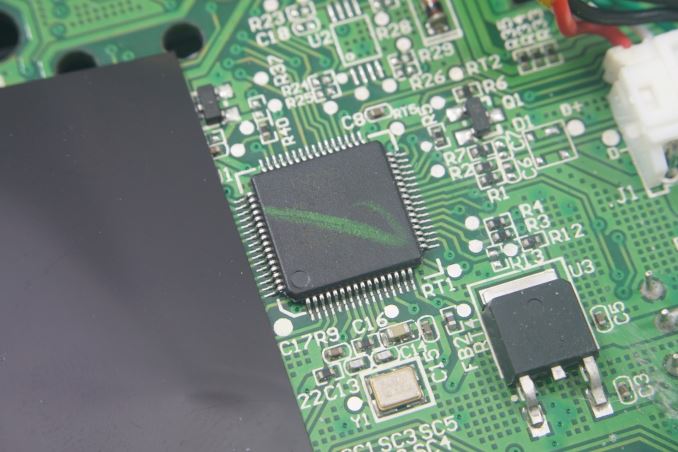








58 Comments
View All Comments
skace - Tuesday, March 15, 2016 - link
Have to disagree. My original experience with mechanical keyboards was when my dad brought home IBM Type-M keyboards from his work. They were not flashy but I greatly enjoyed the feedback of typing on the keyboard and my desire to become a touch typist quickly escalated from the use of that style keyboard. The weight was also an enjoyable aspect of keeping the keyboard in place. And the keyboard did not hold any value to me as I paid nothing for it. So if it didn't perform better, there was really no reason for me to continue using it.Most of my money put into keyboards is simply to reproduce that experience. And my own job perpetually forces me to use OEM brand keyboards that are easily worse at typing. It is very common to see myself typo words at work simply because the keyboard cannot keep up with me.
I have absolutely 0 desire for something that glows or has a ridiculous look, shape or added functionality. But I will support any keyboard manufacturer that sees value in making a well functioning keyboard. I buy dasKeyboard, even though the price often feels overpriced, I love having access to a simplistic mechanical keyboard.
People like me, who have enjoyed mechanical keyboards for many years but now have families who hate the sound of their keyboard are left in a bit of a bind. However, it creates the demand side of the scenario that silent switches are now creating the supply for. This is just a natural move forward from brown switches.
Teknobug - Tuesday, March 15, 2016 - link
I bought some o-rings and they make my mechanical keyboard significantly quieter.kaesden - Tuesday, March 15, 2016 - link
yes, people do like these keyboards quite a lot actually. they actually speed up typing quite signifigantly if you know how to type properly. those basic rubber dome keyboards slow you down because you have to bottom out every key in order to get it to activate. Plus the mechanical keys just move much smoother. If you don't like them thats perfectly fine, no one is forcing you to use them and there's no shortage of cheap rubber dome keyboards for those who prefer that tech.Panther6834 - Wednesday, March 16, 2016 - link
As some one who has owned a few different mechanical keyboards over the years (most recently a Razer BlackWidow...although, once I finish typing this, I'll be heading to Best Buy to pick up the Corsair Strafe RGB MX Silent I ordered a few days ago, if that tells you anything), I can tell you that, depending on the keyswitch type, mechanical keyboards not only can, they WILL improve your gaming and/or typing. While some hold the belief that MX Reds are best for gaming, and MX Blues are best for typing, such is not always the case.There was a columnist who, about a year ago, tested keyboards with Red, Blue, & Brown Cherry MX switches. He typed over long periods of time, typing the exact same information, & he discovered that he obtained the fastest typing speeds using the keyboard with the MX Red switches. While gamers tend, for the most part, to prefer sound level & lighter actuation pressure over actuation sound, typists tend to care mostly about actuation pressure & sound. Additionally, typists tend to listen for the "click" sound as an indicator of when to release. If you're typing minimal amounts of things, then, by all means, go with an MX Blue or MX Brown keyboard, as your fingers won't incur any discomfort due to the amount of typing being done. However, if you have to type for extensive periods of time, a "Blue" user might find a "Brown" to be a better choice, while a "brown" user might find a "Red" to be a better choice. Personally, having tested Blue, Brown, Red, & Black-switch keyboards, I've found the MX Red switches to be the best...for gaming, as well as for everyday typing. As for a comparison of the original Red vs the new Silent (Red), that I hope to determine before the end of the day.
cobacel - Friday, March 18, 2016 - link
@TEAMSWITCHERtry 60% keyboards or 75% ones. They are smaller and more practical than these huge over expensive so called "gaming" gear toys with Christmas lights.
psiclonehi - Tuesday, April 25, 2017 - link
Key travel was an issue for me and was the main reason I returned this junk. Yet, the reason isn't what you think. The travel distance was very short, and so much so that I kept mistyping things.willis936 - Tuesday, March 15, 2016 - link
This model is my first mechanical keyboard and I've been using it daily since I got it. I swapped out all but the first row with PBT doubleshot keycaps. I quite like the keyboard but the non standard first row is a pain in the ass. Also you mentioned the sound is comparable to a membrane keyboard and I'd be quick to disagree. I could never hear a membrane keyboard over VoIP unless the keyboard was getting slammed but I can hear light to moderate typing with this keyboard. Push to talk is very necessary.PPalmgren - Tuesday, March 15, 2016 - link
How does the noise level compare to, say, MX Brown with dampers installed (for example, the Logitech G710+? I know its based on the user, but a standardized comparison point in your testing like the db reduction you mentioned to the K70 at least provides something to work off of when trying to make a purchase decision.One of the problems with purchasing a mechanical keyboard is the severe lack of retail presence. You can't go to a store to test out what feels and sounds nice for you. I like the mechanical responsiveness but hate the noise and struggle with typos due to deeper key depth. Best of both worlds for me would be a mechanical with a key depth similar to a membrane keyboard that's silent - I'd pay $200+ if someone could pull it off.
casteve - Tuesday, March 15, 2016 - link
Best Buy (US) carries this keyboard. Whether or not they display it is tbd. I'm going to wander over there and see.Teknobug - Tuesday, March 15, 2016 - link
It'll be a bit noiser, also if there's an NCIX near you they often have them out on display.